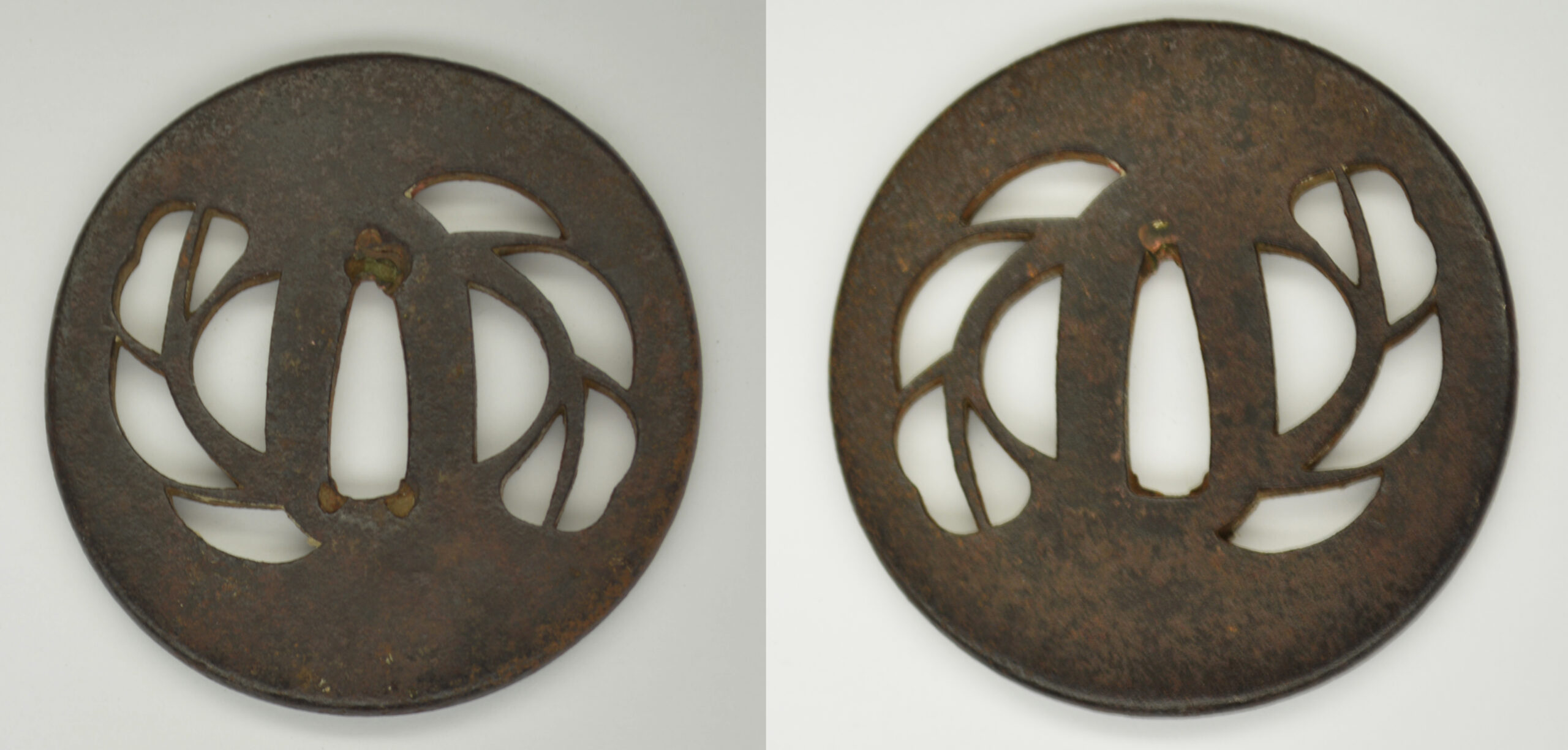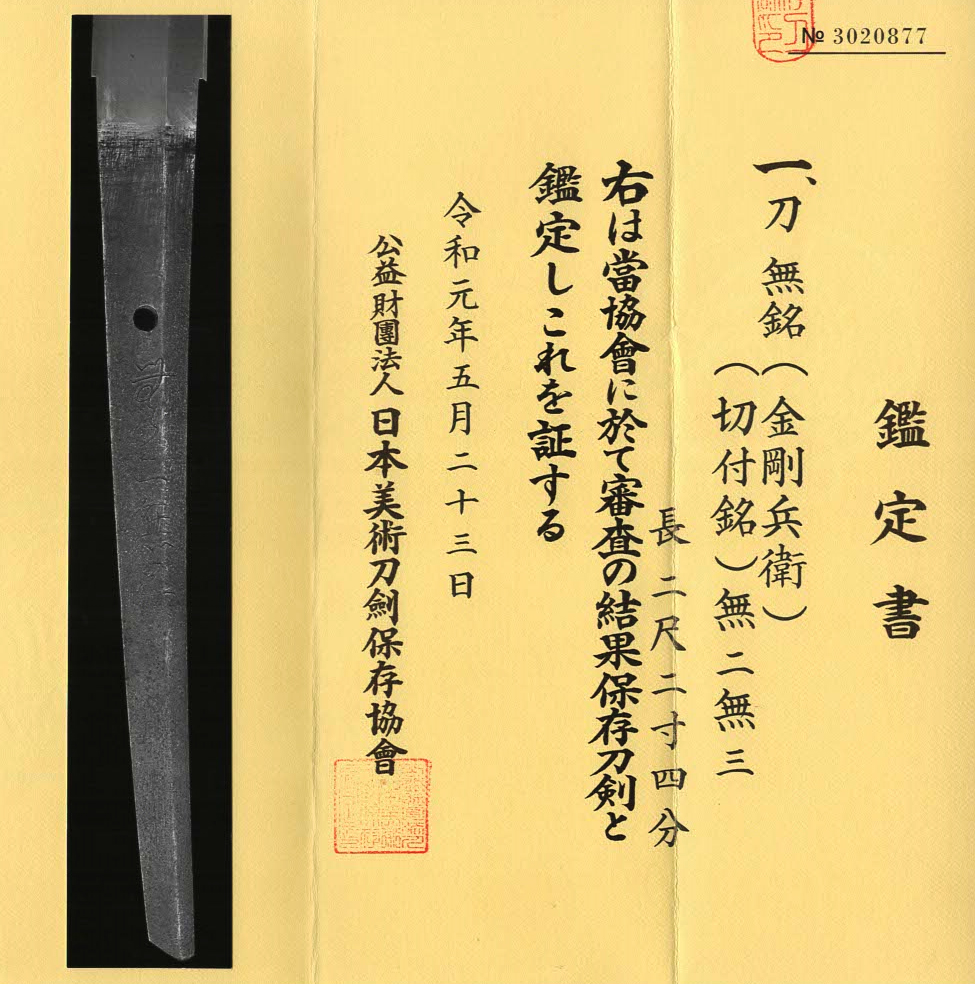無銘の金剛兵衛の刀です。尾張拵えの中でも柳生連也斎の拵えが起源という特別作である柳生拵えに入っており、刀の中心には「無二無三」と切りつけ銘があります。
「無二無三」は仏教の言葉で、成仏するには二乗や三乗はなく、唯一の教えである一乗しかないのだという考えをあらわした言葉とされております。 本作に切り付けられた意味としては、比類のない斬れ味を称えたためか、持ち主に迷いを捨てて斬ることを諭しているのか、いずれにしましても内外共に特別な刀です。
Mumei(Kongo-hyoe)(Kiritukemei)Munimusan
The late Muromachi period:1492-1569 Chikuzen
Tokubetu-Hozon certification by NBTHK
Ha-cho(Edge length)67.8cm Sori(Curvature)approx.1.3cm
Motokasane(thickness)0.7cm Motohaba(width at Ha-machi)3.0cm
Sakikasane(thickness)0.45cm Sakihaba(width at Kissaki)2.2cm
The sword is accompanied by an elegant Koshirae dating from the Edo period.
“It is an unmarked sword of Kongohyoe, and it is a special work that is said to have originated from the YagyuRenyasai’s Owarikoshirae, specifically the YagyuKoshirae. In the center of the sword, there is an inscription that reads ‘Muni Musan.’
‘Muni Musan‘ is a Buddhist phrase that represents the belief that there is only one teaching, which is the single vehicle, and there are no squares or cubes to achieve enlightenment. As for the meaning behind this inscription on the sword, it is believed to either praise its unparalleled sharpness or advise the owner to cut without hesitation. In any case, it is a special sword both internally and externally.”




















